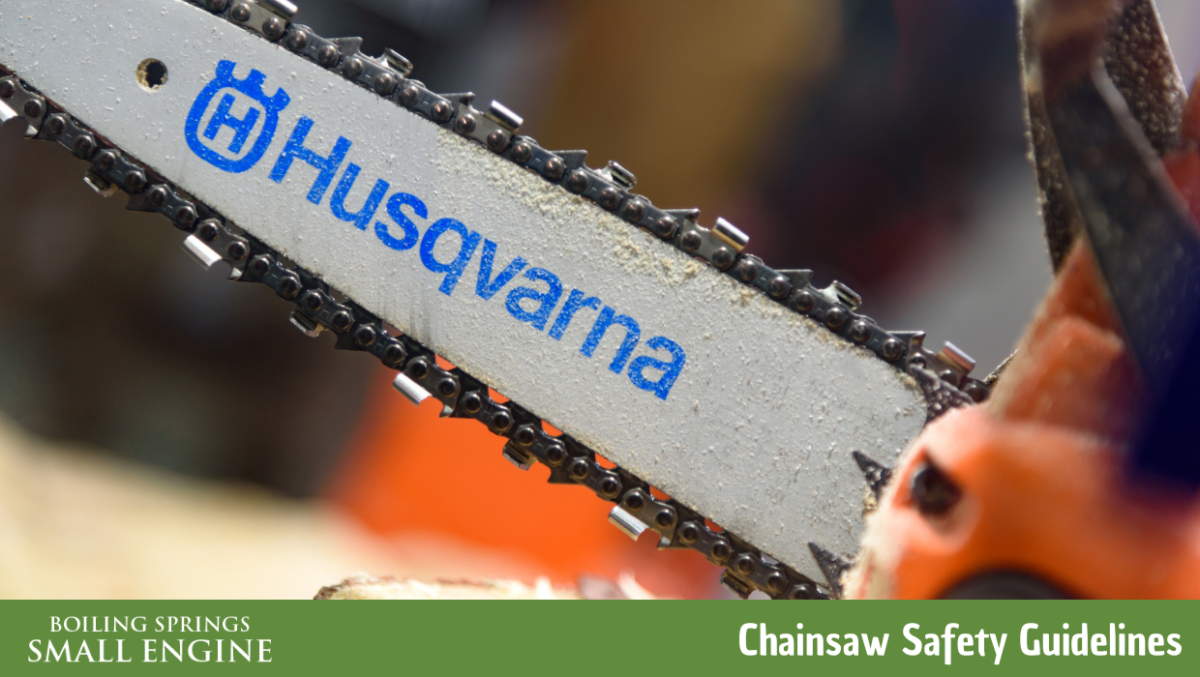Chainsaws are an essential tool used by landscapers, arborists, farmers, and other professionals involved in outdoor activities. However, while chainsaws are useful, they are also quite dangerous and require proper handling to avoid accidents. According to the Occupational Safety and Health Administration (OSHA), chainsaws result in approximately 36,000 injuries each year, most of which are preventable. In this blog post, we’ll discuss essential chainsaw safety guidelines for adults.
Chainsaw Safety Equipment
Before starting any chainsaw work, it is crucial to prioritize safety. To ensure that you are adequately prepared for the task, it is essential to dress appropriately and have the right equipment. It is worth noting that all chainsaws come with mandatory safety features, such as the inertia activated chain brake found in Husqvarna chainsaws. This feature activates the chain brake instantly in the event of a kickback, preventing any potential harm.
One of the most common chainsaw injuries is laceration, which can break the skin. To minimize the risk of laceration and other injuries, it is recommended to wear suitable protective apparel. Husqvarna’s chainsaw protective clothing is thoroughly tested and approved in line with relevant European and International standards. When it comes to personal protective equipment, it is advisable to have the following essentials:
- Helmet with earmuffs, visor, and protective glasses
- Protective pants or chainsaw chaps
- Forestry jacket/shirt for upper body coverage
- Protective trousers
- Anti-slip boots
- Gloves
On Site Safety
When you reach the work site, it’s crucial to plan for the felling process. Start by ensuring that there is no one within a distance of at least twice the tree’s height from the tree you intend to fell. Carefully inspect the tree for any signs of decay or cracks. Take note of whether the tree is leaning and consider the direction in which it should be felled, keeping in mind your upcoming work.
Felling Direction
When it comes to felling trees, understanding their natural direction of fall is crucial. Several factors affect this, including the tree’s lean, the shape of its branches, and the presence of snow-load or snow-covered branches on the crown. If you find yourself uncertain about the tree’s lean, take a step back and use a plumb line to confirm.
While it is possible to fell a tree against its natural direction, it requires knowledge, experience, and the right felling support tools. It is important to note that trees with weak timber, such as dead or decayed trees, should always be felled in the easiest direction for safety reasons.
Chainsaw Handling
When it comes to using a chainsaw, proper techniques are crucial to minimize the risk of injury or strain.
Thumb Grip: To reduce the force of a kickback, wrap your thumbs and fingers completely around the handles. Additionally, hold your left-hand thumb under the front handle for better control.
Close Contact: Don’t let fear overcome you when using a chainsaw. Hold it close to your body to achieve a better balance and enhanced accuracy.
Position: Maintain the optimal working position by positioning your left foot in front of your right. Remember to keep your knees bent, not your back, to avoid strain.
Chain Off: Never forget to ensure that the chain is not rotating when you move to another spot. This precautionary measure is crucial for your safety and the safety of those around you.
Safety Distance: Always make sure there is a minimum distance of 3 meters between you and anyone else when operating a chainsaw.
By following these essential tips, you can handle a Husqvarna chainsaw or Stihl chainsaw with confidence and ensure a safe working environment. Remember, proper technique and caution are the keys to a successful chainsaw operation.


